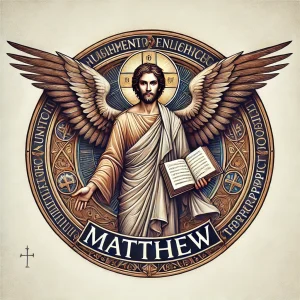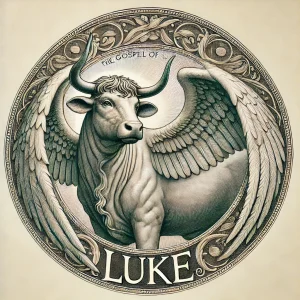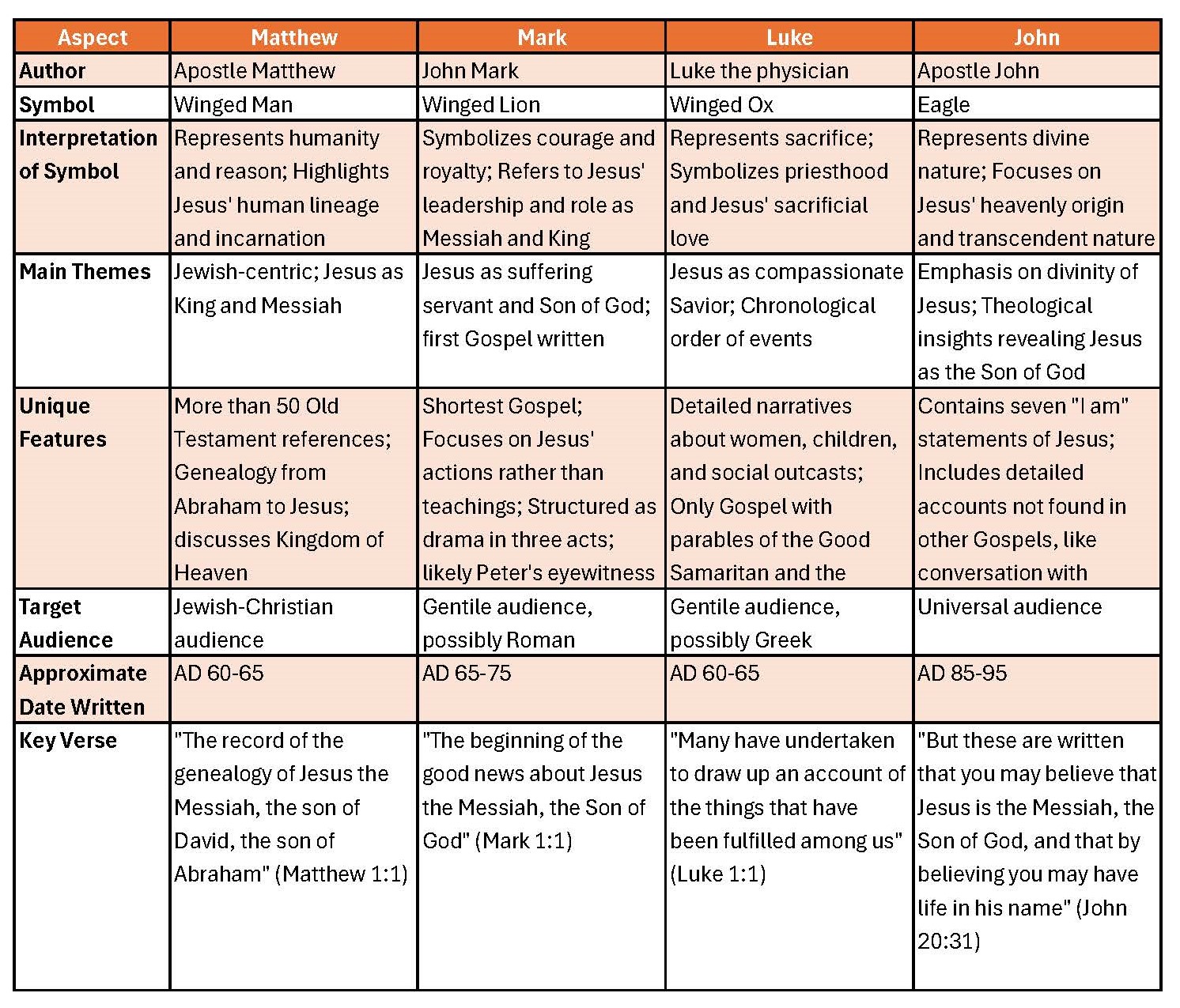GOSPELS: HOW DO THE FOUR GOSPELS DIFFER FROM ONE ANOTHER?
The Four Gospels: A Rich Mosaic of Jesus’ Life and Ministry
The Holy Bible contains four Gospels – Matthew, Mark, Luke, and John – which provide distinct yet complementary accounts of the life and public ministry of Jesus Christ. Each Gospel offers a unique perspective on Jesus’ teachings and actions, contributing to a richer understanding of His mission and message.
THE PURPOSE AND AUDIENCE OF EACH GOSPEL
The Gospel of Matthew

Matthew’s Gospel, symbolized by a winged man, presents Jesus as the Messianic King and focuses on fulfilling Old Testament prophecies. It was likely written for a Jewish-Christian audience, highlighting Jesus as the fulfillment of the promises made to the Jewish people. Matthew emphasizes Jesus’ teachings, particularly the Sermon on the Mount, and portrays Him as the new Moses, bringing a new law.
The Gospel of Mark

Mark’s Gospel, represented by a winged lion, portrays Jesus as the suffering servant and Son of God. It is the shortest Gospel, characterized by a fast-paced narrative that emphasizes Jesus’ actions over His words. Written for a Gentile audience, likely in Rome, Mark’s account underscores the power and authority of Jesus, as well as His willingness to suffer for humanity.
The Gospel of Luke

Luke’s Gospel, symbolized by a winged ox, presents Jesus as the compassionate Savior for all people. Luke, a physician and companion of Paul, includes many parables and highlights Jesus’ concern for the marginalized, such as women, the poor, and sinners. This Gospel is notable for its detailed historical context and its emphasis on the universality of Jesus’ message.
The Gospel of John

John’s Gospel, represented by an eagle, offers a more theological perspective, emphasizing Jesus’ divinity and His role as the Word made flesh. Unlike the Synoptic Gospels (Matthew, Mark, and Luke), John focuses on the spiritual and divine aspects of Jesus’ life, including His pre-existence, the “I am” statements, and His intimate relationship with the Father.
Comparing the Four Gospels
The Synoptic Gospels (Matthew, Mark, and Luke) share a similar structure and content, often recounting the same events with slight variations in detail and emphasis. John’s Gospel, however, stands apart with its unique material and theological focus, providing a complementary yet distinct narrative.
Here is a comparative chart of the four Gospels:

Theological Symbols and Their Interpretations
The symbols associated with each Gospel, derived from Ezekiel’s vision and the Book of Revelation, have deep theological significance and are often depicted in Christian art and architecture:
– The Winged Man (Matthew): Represents Jesus’ humanity and incarnation.
– The Winged Lion (Mark): Symbolizes royalty and resurrection, reflecting Jesus’ power and kingly nature.
– The Winged Ox (Luke): Signifies sacrifice and service, emphasizing Jesus’ role as the sacrificial offering for humanity.
– The Eagle (John): Represents the soaring spirituality and divine nature of Christ, highlighting His heavenly origin and perspective.
REFLECTION
As we contemplate the four Gospels, we are reminded of the richness and depth of Christ’s message. Each Gospel offers a unique lens through which we can understand Jesus’ life and teachings. This diversity invites us to engage with Scripture more deeply, recognizing that God’s truth is multifaceted and can speak to us in various ways.
For us as Christians, the existence of four Gospels challenges us to approach our faith with openness and humility. Just as each evangelist brought his own perspective to the story of Jesus, we too are called to bring our unique experiences and understanding to our faith journey. At the same time, we must remain united in the essential truths of Christ’s message of love, redemption, and salvation.
Let us embrace the complementary nature of the Gospels, allowing their combined witness to deepen our relationship with Christ and inspire us to live out His teachings in our daily lives. May we, like the four evangelists, become bearers of the Good News, sharing Christ’s love and message with the world in our own unique ways.
